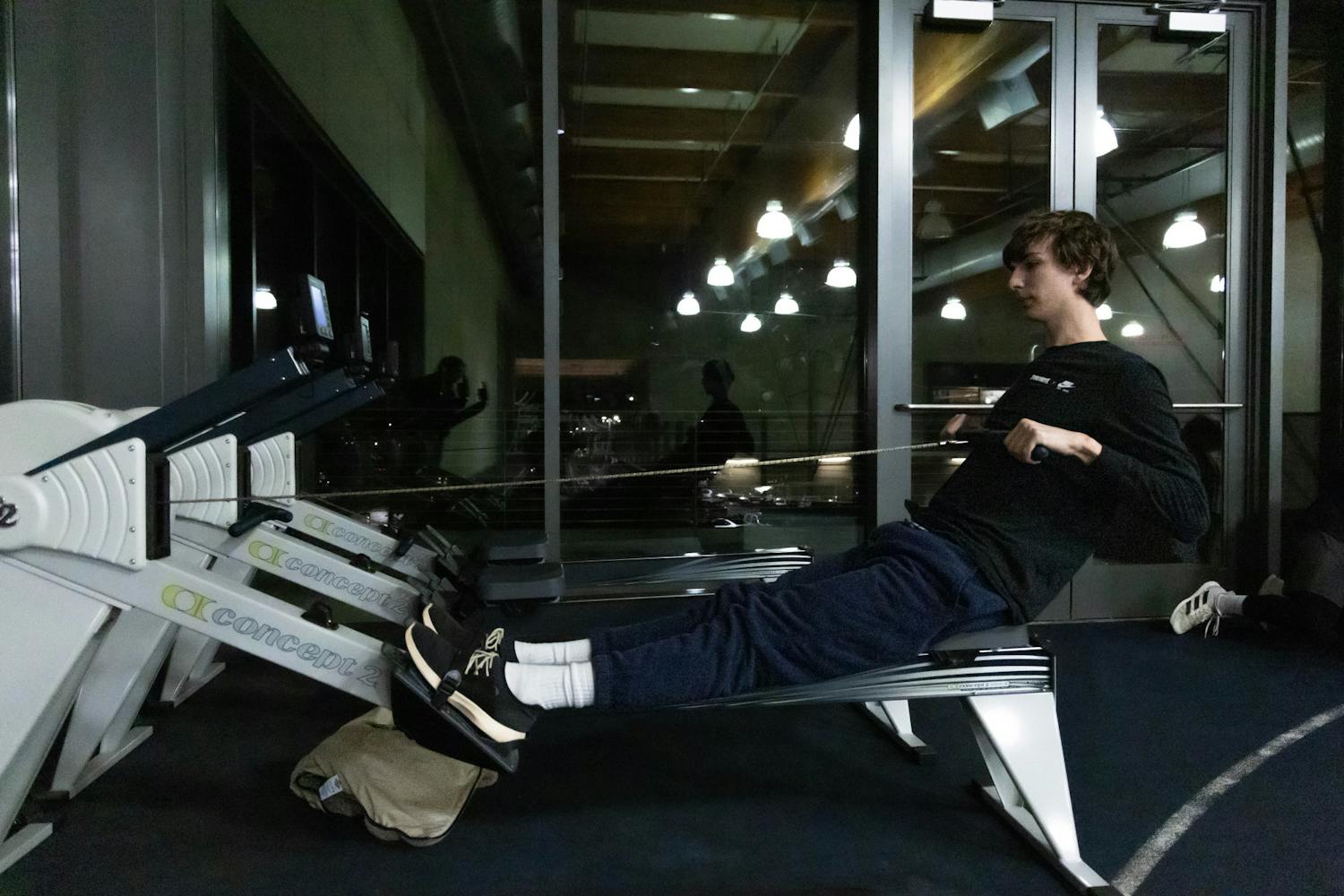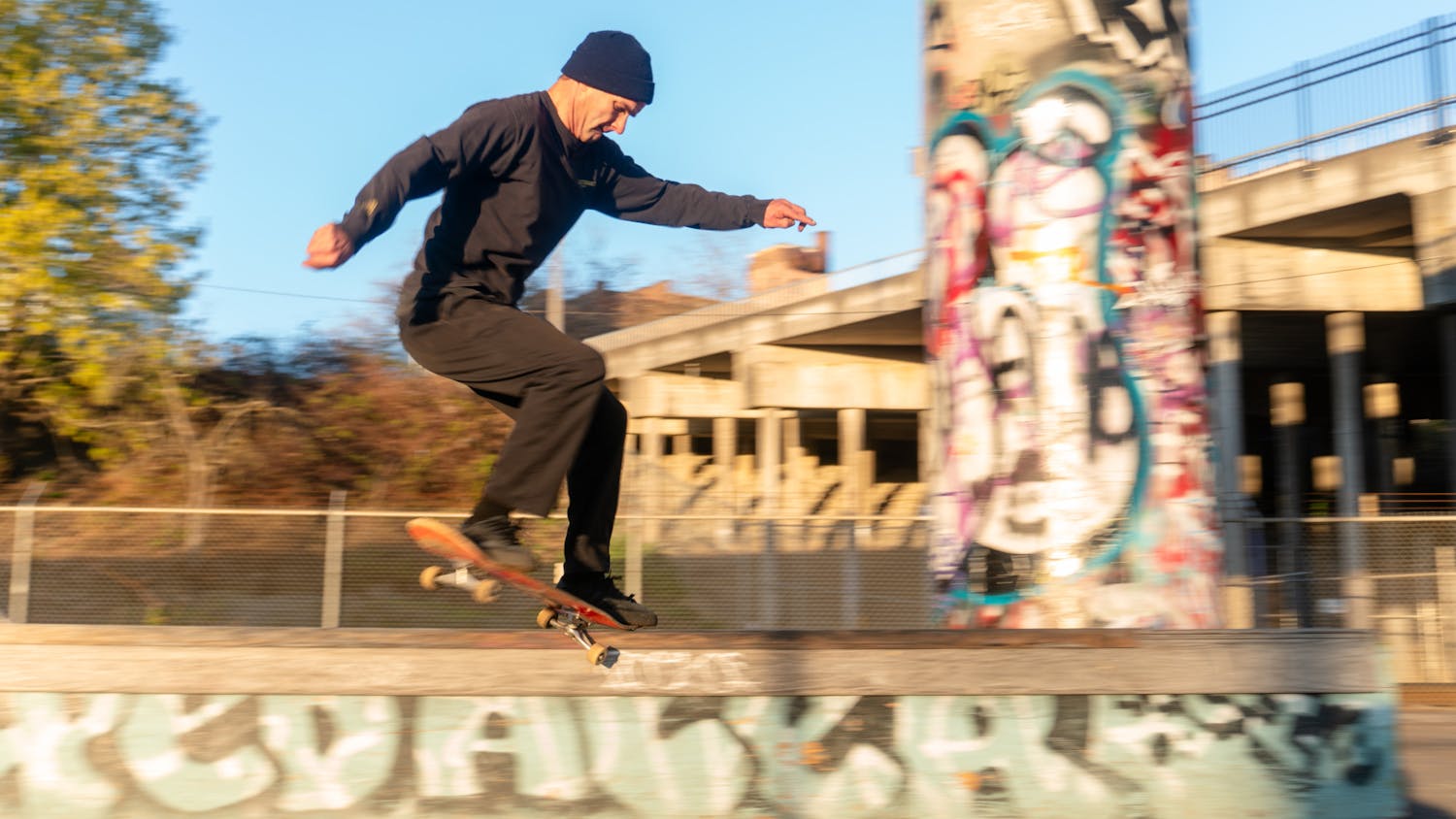On the second floor of Western Washington University’s Wade King Recreation Center, tucked away in a corner surrounded by large windows, sit three Concept 2 Rowing Machines. Maybe you’ve tried using them or maybe they’ve appeared intimidating until now, but after reading this article I hope you’ll be inspired to give them a go.
As a coxswain, I steer the boat as the rowers row. I am also in charge of safety and motivation. Off the water, coxswains often help lead erg workouts making time calls and giving corrections on form.
Rowing machines, or “ergs” as rowers call them, are some of the best full-body workout machines there are.
“In my opinion, it's one of the best pieces of cardio machines in our facility,” said Ron Arnold, a fitness coordinator at the Rec. “It works everything… all the muscles on the back side of our body, which sometimes we refer to as the posterior chain, they're known as the erector muscles. So, those are the muscles that keep us erect and upright, on two feet. Those muscles are so critical to the posture.”
Over the summer two of my “gym-bro” friends took me to our local gym. We stepped through the door and the whole place was packed. The only cardio machine not in use was the erg so I asked my friends if we could warm up on them.
One of them commented that they barely feel anything when they use the rowing machine and it wasn’t worth the time. I responded saying they were most likely using them wrong.
I sat them down and taught them the sequence coaches often teach people learning how to erg for the first time.
Step one: Start with the knees bent, shins vertical, body slightly leaning forward and arms out straight in front of you as your hands clasp the handle — this is what you call the “catch” in rowing terms.
Step two: From there, only push out your legs from the foot stretchers. You shouldn’t start pulling the handle with your arms just yet.
Step three: Once your legs are fully extended, your body leans back slightly, engaging the core.
Step four: Then, pull your elbows back, making sure the chain stays mostly parallel to the machine as you draw the handle to your lower chest.
Step five: The motion is reversed, with your arms reaching forward, then body, then legs until your shins are back to vertical.
Once my friends were comfortable, I got them to speed up as they developed a rhythm working through the steps. I made sure to note that it is important to not pull with your arms until your legs are fully extended.
I also told them a good amount of your power should be coming from the legs, the remainder coming from pulling with your arms. If you’re doing a low-intensity piece and your back starts to hurt, it would help to slow things down and run through each step.
“The very first thing I like to talk about is where you sit on the seat,” said Molly Mastrorilli, an assistant coach at the Whatcom Rowing Association. “A lot of people will sit with their tailbone tucked underneath them and we actually want to sit up a little higher with good posture that we don't normally sit in a seat with.”
It’s important to also make sure the erg is in the correct setting. Moving the arrow between “three” to “five” is recommended, as it simulates the feeling of pulling an oar through the water.
My friends did a semi-intense 2,000-meter piece, with me guiding and making posture corrections. Once their screens hit the 2,000 meter mark, their faces were covered in sweat and they were gasping for breath.
The friend who made the previous comment instantly retracted his statement while my other friend joked that we didn’t need to lift weights because the erg was already a full-body workout.
A lot of people – cough – crossfitters would argue that there is no correct way to use a rowing machine. Even Rec Center employees like Arnold agree that saying there is a “correct” way to use the machine could discourage people.
While that may be possible, the purpose of this article is to inform you on how to use the erg like a rower and get the most out of it, to provide a guide that’ll give you confidence to try this machine or add it to your existing routine. And while technically there is no correct way to use the machine, the Concept 2 erg was designed for rowers.
Injuries are also liable to happen if the rowing machine is used wrong. Even the most seasoned rower can get injured on the erg.
“I've seen a lot of back injuries,” said Alexa Johnston, Western’s men’s rowing novice coach. “A lot of leg injuries as well, mixed in all over the place just because they're not having the correct form.”
A 500-meter piece would be good for beginners, said Jonas Kennedy, a second-year Western student and rower.
“[Erging] takes a little bit of figuring out and getting used to,” Kennedy said. “Once you’re used to it, you don’t really need to worry.”
Janisa Cook (she/her) is an opinions reporter for The Front this quarter. She is also on Western's women’s rowing team. In her free time, she likes to paint, go to coffee shops, and hang out with her roommates. You can reach her at janisacook.thefront@gmail.com.









